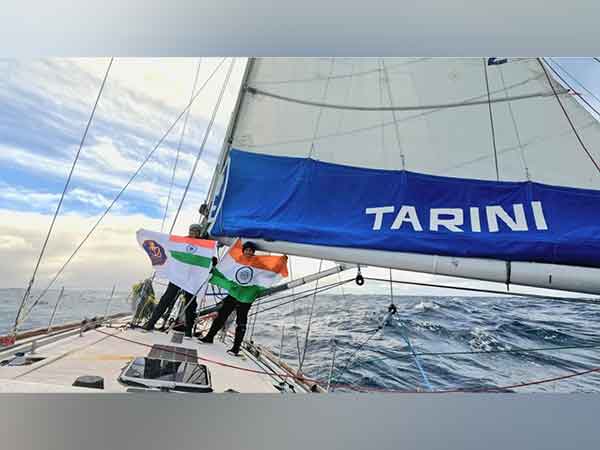Sailing through Solitude: INSV Tarini's Historic Passage at Point Nemo
INSV Tarini, helmed by Lt Commanders Dilna K and Roopa A, marked a major maritime milestone by crossing Point Nemo. Navigating solely by sail, they play a pivotal role in the Navika Sagar Parikrama II mission, enhancing oceanographic studies with pivotal water samples on route to the Falkland Islands.

- Country:
- New Zealand
Aboard the INSV Tarini, Lieutenant Commanders Dilna K and Roopa A of the Indian Navy achieved a historic feat by crossing Point Nemo during the third leg of their current mission. The duo embarked from Lyttelton, New Zealand, and are en route to Port Stanley, Falkland Islands, as part of the Navika Sagar Parikrama II initiative, according to an official Navy statement.
Point Nemo, located at 48°53'S 123°24'W, is the oceanic pole of inaccessibility, renowned as one of the most isolated locations on the planet, approximately 2,688 kilometers from the closest land. The area is used by space agencies worldwide to guide decommissioned satellites and spacecraft to safely re-enter the Earth's atmosphere, ensuring they land in the ocean away from populated areas.
Remarkably, the passage through Point Nemo was undertaken solely under sail, underscoring the navigational prowess demanded by such challenging waters. During their journey, the officers collected samples that are set to aid scientific studies at the National Institute of Oceanography. These samples are essential for understanding the marine biodiversity and chemical makeup of the water in the vicinity.
This phase of the Navika Sagar Parikrama II mission reflects India's commitment to scientific exploration, as the officers press on toward Port Stanley. Their voyage is set to further the mission's aims, paving the way for extending India's international collaborations in the realm of oceanographic research.
(With inputs from agencies.)










